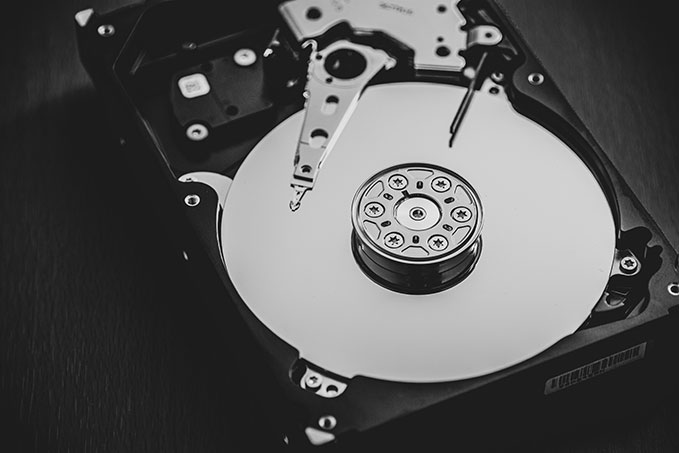The Importance of Effective Data Damage Practices in Shielding Sensitive Info and Ensuring Computer System Safety And Security
In an era where data breaches are progressively usual, the value of efficient data devastation practices can not be overemphasized. Organizations face substantial threats when sensitive information is inadequately gotten rid of, potentially bring about unauthorized access and serious economic consequences. Executing durable information destruction methods not only minimizes these dangers but additionally straightens with legal compliance needs, ensuring that organizations copyright their credibility and foster client trust. The question continues to be: what particular approaches can be utilized to improve these techniques, and how can companies effectively integrate them right into their general cybersecurity framework?
Recognizing Data Devastation
Recognizing data damage is vital in today's digital landscape, where delicate details can conveniently be jeopardized. Efficient data damage includes not merely making sure however deleting files that information is irretrievable through extensive approaches. This procedure is crucial for companies that manage confidential customer details, copyright, or interior papers, as any violation can lead to serious financial and reputational effects.
Data destruction incorporates numerous techniques, including shredding physical media, degaussing magnetic storage gadgets, and employing software-based solutions that overwrite information several times. Each method offers a particular purpose and should line up with the level of sensitivity of the info being dealt with. For instance, physical destruction is commonly favored for disk drives having very personal information, while software program approaches might be sufficient for less sensitive info.
Furthermore, sticking to sector requirements and guidelines, such as the General Information Defense Guideline (GDPR) or the Medical Insurance Transportability and Accountability Act (HIPAA), is crucial for compliance and to alleviate lawful threats. Organizations should establish a durable data damage policy, train staff members on ideal methods, and routinely audit their treatments to guarantee that all sensitive info is gotten rid of safely and successfully.
Dangers of Inadequate Practices
Insufficient information damage practices expose organizations to substantial dangers that can have significant consequences. When delicate information is not properly thrown away, it remains vulnerable to unauthorized gain access to, which can result in data breaches and identity burglary. Such events not only jeopardize the protection of people yet likewise taint the organization's credibility, leading to a loss of customer trust fund and potential monetary effects.
Furthermore, governing compliance is progressively rigorous in numerous sectors. Failing to follow information destruction policies can cause hefty penalties and lawful activities against organizations. These fines can stress financial sources and draw away interest from core organization operations.
On top of that, the abuse of recurring information can lead to intellectual property theft or business reconnaissance, threatening affordable benefits (data destruction). The impact of inadequate data damage prolongs past prompt economic losses; it can additionally lead to lasting damages to brand name honesty and market placement

Organizations must recognize that data safety and security is not entirely regarding stopping violations; it likewise includes the accountable administration of data throughout its lifecycle. Ignoring efficient data damage procedures can have devastating implications, underscoring the necessity for durable actions to minimize these threats.
Finest Practices for Data Damage
Executing effective information devastation methods is necessary for securing sensitive information and maintaining conformity with governing requirements. Organizations ought to adopt a multi-faceted approach to ensure that information is irretrievable, consequently avoiding unauthorized access and possible violations.
First, data should be classified based on sensitivity, permitting organizations to use ideal damage methods customized to the level of threat. For digital data, making use of software-based data-wiping tools that abide by sector requirements can effectively overwrite existing information. Physical destruction techniques, such as shredding or degaussing, are essential for tools that keep delicate info, ensuring total eradication.
Developing a clear data retention plan is important, describing exactly how long various kinds of information need to be kept before destruction. Routine audits of data storage space systems are likewise sites necessary to determine unneeded or outdated information needing removal.
In addition, training workers on the relevance of data devastation and the specific procedures to adhere to fosters a culture of safety within the company. Finally, preserving documentation of data devastation processes supplies responsibility and supports conformity with interior policies and exterior regulations. By sticking to these finest techniques, companies can significantly mitigate the risks related to data direct exposure.
Legal and Compliance Considerations

Failure to adhere to these regulations can lead to extreme charges, consisting of substantial penalties and reputational damages. Organizations should apply a robust information destruction policy that aligns with these legal structures and provides clear guidelines on the appropriate approaches of data disposal, whether physical shredding or digital cleaning.
Moreover, preserving documents of information destruction tasks is crucial for demonstrating compliance throughout audits or inspections. By prioritizing lawful and compliance considerations, organizations can improve their information security position and foster trust fund with customers and stakeholders, ultimately adding to a much more safe and secure data administration setting.
Benefits of Effective Information Destruction
Efficient information destruction practices prolong past mere compliance; they offer significant advantages to organizations that prioritize them. By guaranteeing that sensitive info is irretrievably ruined, companies alleviate the danger of data breaches and the potential financial effects related to them. This aggressive strategy not just safeguards versus unapproved gain access to however additionally boosts the total reliability of the company in the eyes of customers go to my site and stakeholders.
Applying durable information damage techniques, such as physical damage of storage space gadgets or sophisticated data wiping strategies, adds to the conditioning of an organization's cybersecurity posture. data destruction. It reduces the likelihood of intellectual home theft and shields exclusive information, thereby keeping an one-upmanship out there

Conclusion
In final thought, effective data destruction techniques are essential for safeguarding delicate details and improving general computer security. Inevitably, a dedication to durable information damage methods promotes a culture of responsibility, thereby strengthening a company's cybersecurity pose and maintaining customer depend on.

Comments on “Leading Tips for Ensuring Secure Data Destruction in Your Cyber Security Plan”